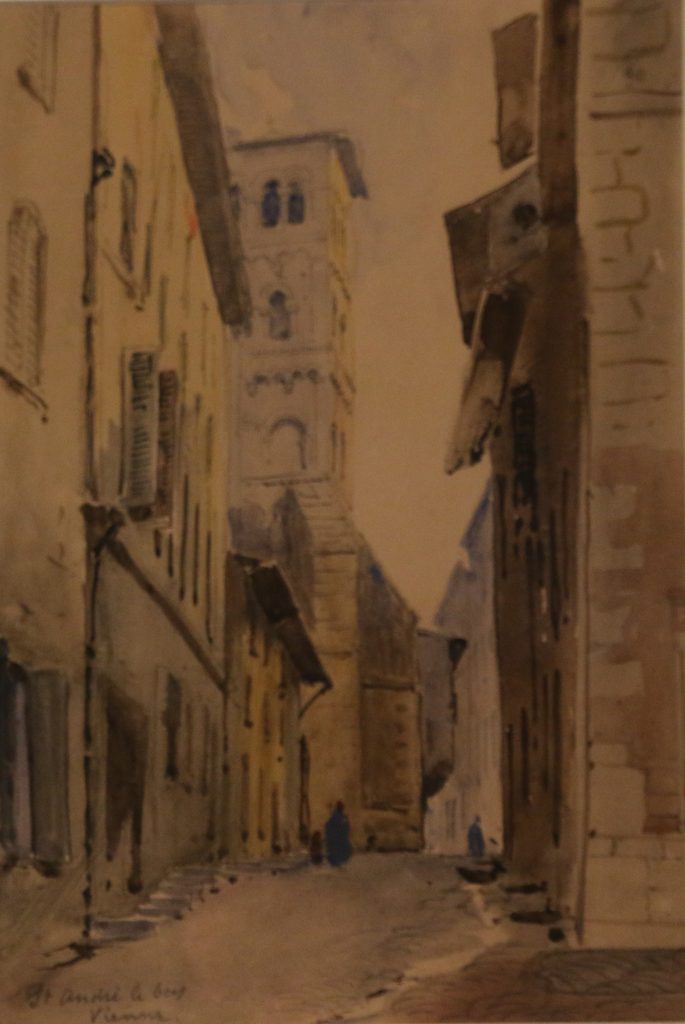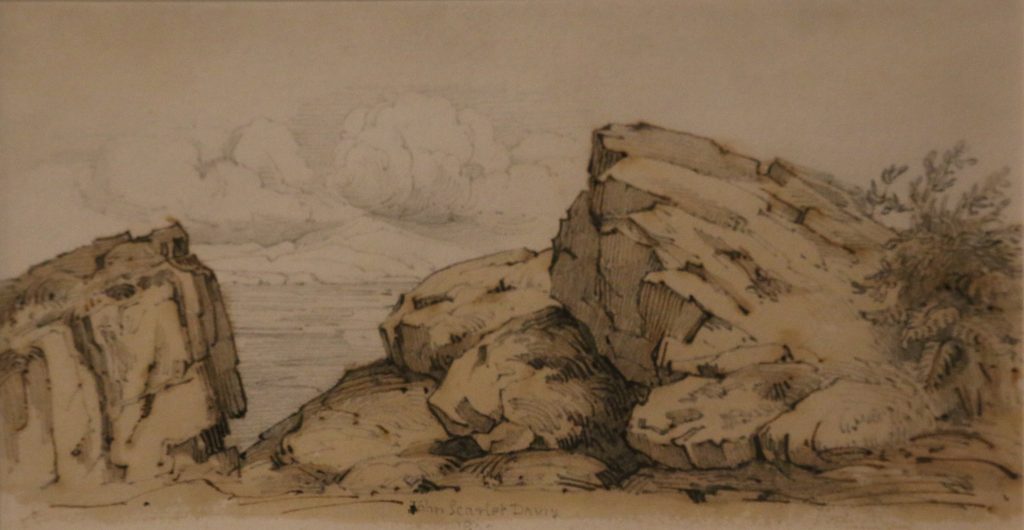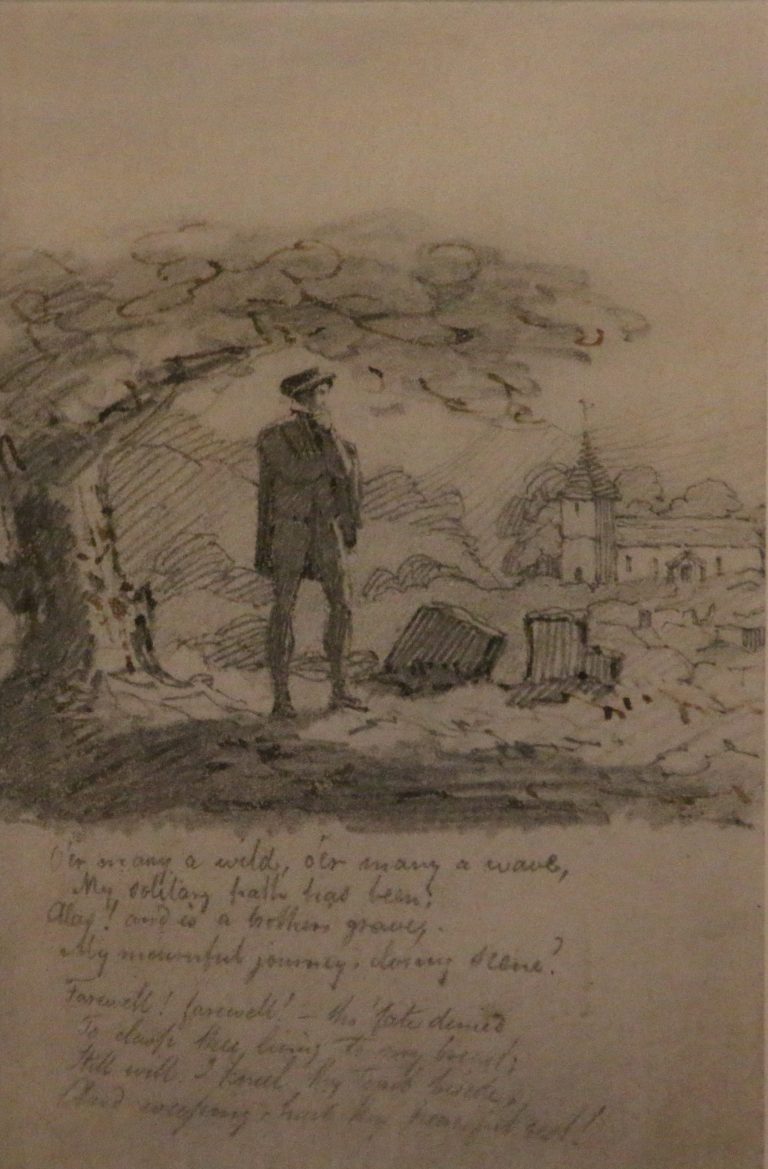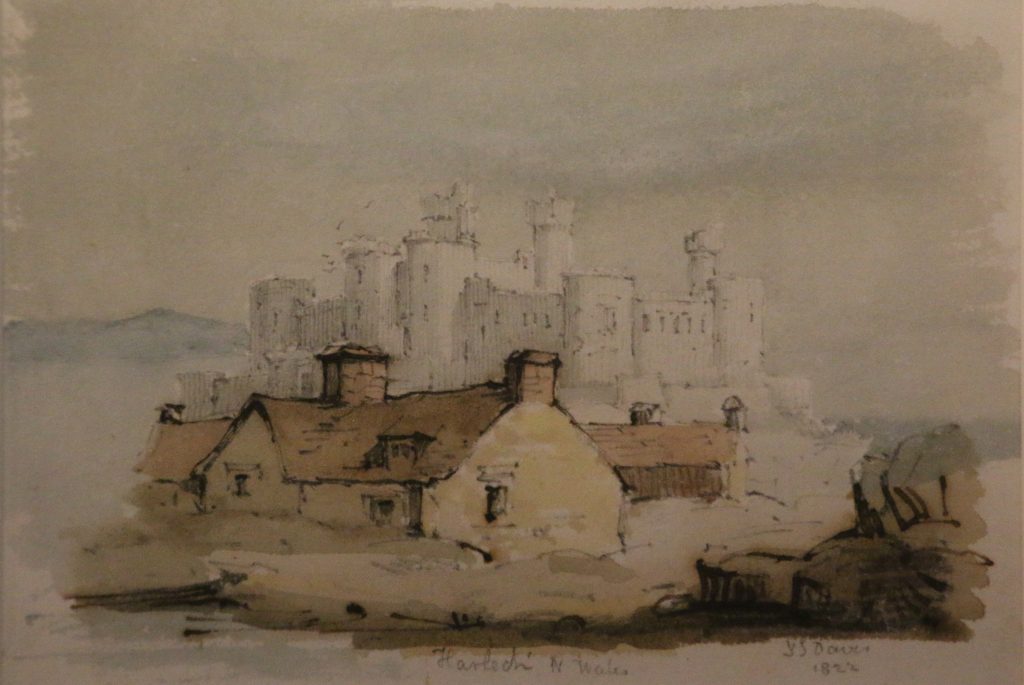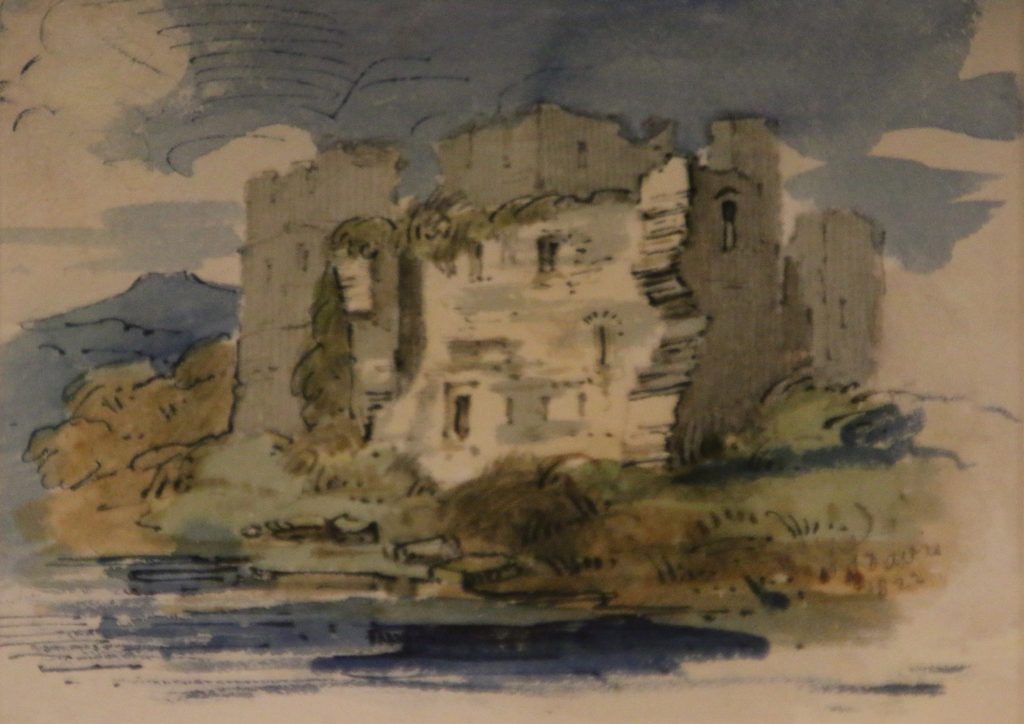
The South Gallery of Leominster Museum is dedicated to work of John Scarlett Davis, Leominster’s own artist. The collection includes a self-portrait, painted in oils, a sketchbook, two views painted on wood panels thought to have come from Davis’s childhood home, and a large number of watercolours. If you are unable to climb the stairs to the gallery, copies of many of the paintings can be seen on the tablet.
John Scarlett Davis was an English landscape, portrait and architectural painter. He was born on 1st September 1804 at 2 High Street, Leominster. He was the second of five children born to James Davis, a silversmith & watchmaker and his wife Anne. The Davis family had moved to Leominster from Glamorgan over 200 years before & were well respected in the town. The house that John knew as a child still survives, although the wall paintings he did inside are lost. In the picture below, it is the house with the blue plaque.

John’s talent as a painter appeared early and was encouraged by his family. He first went to London in 1815 with his father at the age of 11, to receive a drawing prize. At that time, there were no trains or cars, so they probably travelled by stage coach, which were pulled by horses and stopped regularly at coaching inns on the 4-day journey to London. The Lion Hotel in Broad Street was one of the most important inns in Leominster in those days.
Over the next two decades, he must have used the coaches many times to travel to and from London & elsewhere. His father sent him to boarding school in Hackney, London, at the age of 14, and he studied later at both the British Museum and the Royal Academy before becoming a professional artist. He returned to Leominster from time to time—for example, for his father’s funeral in 1828. For most of his adult life, he lived and worked in London, travelling to the Continent, whilst working for several rich patrons.

The Priory was the family’s place of worship. James & Anne Davis were married there, and John and his siblings were baptised in the church. Many of the Davis family are buried in the churchyard. Sadly many of the headstones have been lost, so it is not possible to know exactly where their graves are. John himself died of tuberculosis on 29th September 1845, at the age of 41, and is buried in Kensal Green cemetery in London. Although he had no children, his siblings did, and there is at least one descendant of the Davis family still living in the town.
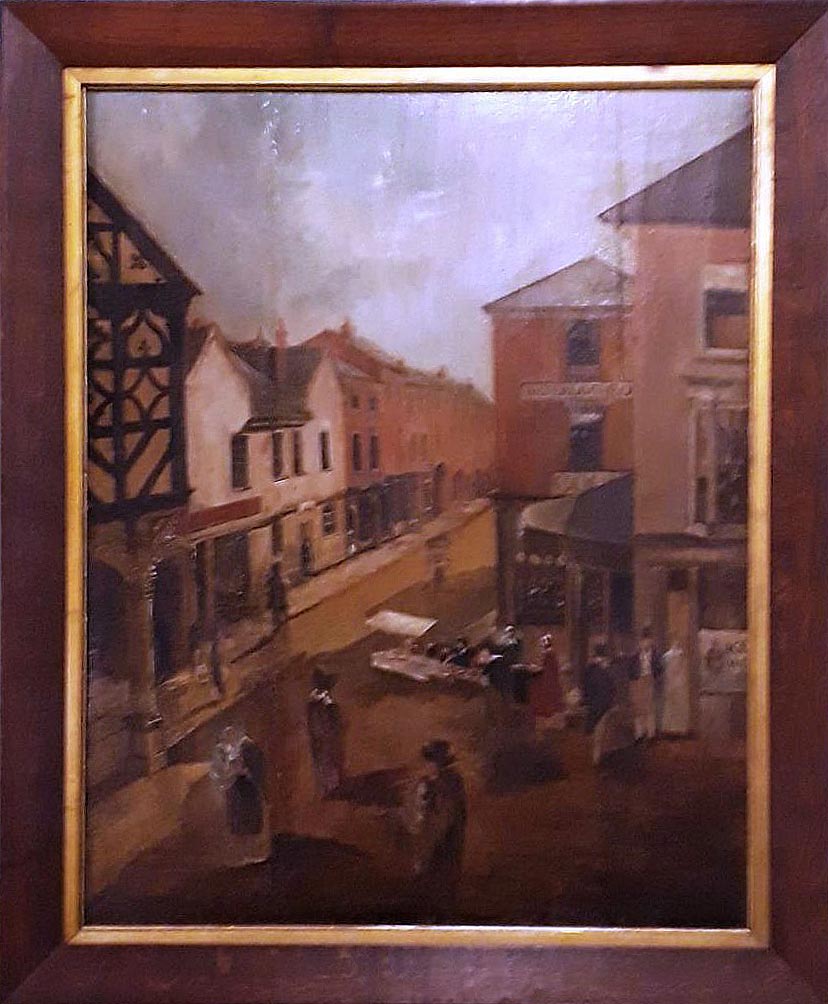
John almost certainly painted this picture from one of the windows in his house, as a boy. If he could return to his home town, he would still recognise this view, more than two hundred years later. The shape of the streets and most of the buildings have not changed at all. The timber framed market house in the picture (now called Grange Court) can be seen at the left in its original position, before it was moved to where it is now.

This picture was also painted by Davis when he was young. It shows clearly what Broad Street looked like in the early 19th century. Once again, you can see the market house in its original position. Many of the buildings you can see on Broad Street are still there. Lots of things are going on in the street—soldiers on parade, a woman selling things on a stall, a couple arriving in a horse drawn carriage, and a young chimney sweep. Where do you think the group of men on the right have just come from?

The painting shows why it was decided to move the market house. John’s view was looking down what is now the High Street, towards the top of Broad Street. Although the building didn’t block the road completely, it did restrict the throughflow of traffic. Being a timber frame building, it was relatively easy to take down without damage, and reassemble elsewhere. It was moved from its first site at the top of Broad Street to where it is now in 1856, eleven years after John’s death in London. When that happened, it changed from being a market hall (with council chamber above and open trading space below) to a private house, and the open ground floor was filled in. to make more rooms. Now it is a community centre, with a café.
On the national and international stage, Davis is probably better known for his watercolours than his oil paintings. The watercolours included portraits, landscapes, and church interiors, and he developed a distinctive speciality in painting the interiors of art galleries and libraries, both public and private. Between 1842 and 1845 he was commissioned to draw copies of the paintings in the collections of the British royal palaces. He painted scenes on the Continent during his travels there. He was in Florence in 1834 (where he painted the interior of the Uffizi gallery), and Amsterdam in 1841. Thanks to the forethought of previous generations of volunteers, Leominster Museum is privileged to care for a significant number of Davis’s paintings in his home town. There is a large self-portrait in oils, painted when Davis was 26. It was the first purchase made by the Museum in 1974. The Museum also has a collection of small watercolours and a sketchbook, where he tried out many of his ideas. Entries from the sketch book can be seen on a CD displayed and available for sale in the Museum.
Davis’s paintings can be found in a number of large galleries around the world, including the National Portrait Gallery, Tate Britain, the Metropolitan Museum of Art and the Yale Centre for British Art.
